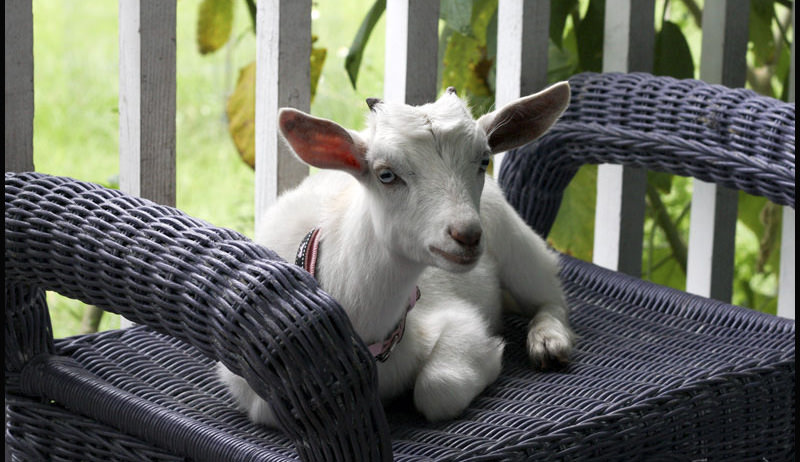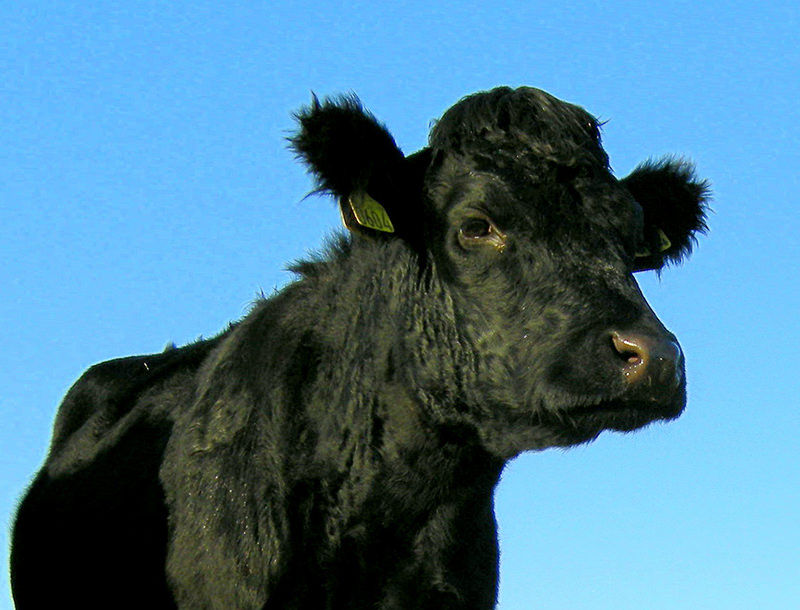What Type of Farm Animal Should I Get
Perhaps nothing makes a farm feel more like a farm than animals. They set the pace of the Day, and they cater rhythm, activity, manure and (hopefully) income. Animals, one could say, are the life. Of course of study, as an urban granger, your animal options may exist restricted. Blank is a factor, and in many areas, there are restrictions connected what kinds and how many animals you can have. Here are six animals suited for city life: Maybe you'll find one that could provide you a little unneeded income, fertility and, allow's be honest, entertainment.
1. Chickens

Chickens are the all but obvious and most popular choice for the urban farmer. Relatively quiet animals (the hens are, at least), they acquire highly sought-later products—eggs, meat and more chickens—and are becoming increasingly lawful in many cities. To boot, chickens as wel make over a nitrogen-heavy muck, which can make an excellent natural plant food when mixed into compost or grease. The Cornish Cross, the Cherry Ranger and the Freedom Ranger are the best backyard meat breeds, whereas in that location are numberless excellent laying breeds: Black Australorp, Easter Egger, Barred Rock, Rhode Island red, Buff Orpington … the heel goes on.
To make a profit from your backyard flock, you can raise them for meat or eggs, but also consider bringing up them for the chicks. Quaternity- to 6-month-old pullets––that is, hens that are non one of these days laying––can often go for $10 to $20 each. An urbanised Farmer could make a decent living just marketing these young birds to other urban farmers.
2. Rabbits

Why more urban farmers aren't upbringin rabbits is a bit of a mystery to me. Although they give the sack be used for fiber or breeding, their most useful product is often inwardness and many a people may feel intimidated by—or just not fascinated in—raising such a cute creature then hauling information technology off to mow down. That beingness said, a young coney can get to meatman weight in fair-minded 12 weeks, which rivals chickens in terms of speediness.
Raising rabbits takes salutary organization, but their sustentation is relatively simple, and the upfront investment can be practically more moderate than large animals: less fencing, smaller pens, inferior feed, cheaper fruitful stocks. Moreover, many rabbits can be produced in a precise small area—hundreds of rabbits a class in your modal backyard if planned accordingly.
For meat breeds, consider fostering Bubbly d'Argent, New Zealand, CA, Creme d'Silverish operating theatre a combination. For pet breeding, the Lops, Dutch and Miniatures are very productive and identical adorable. So, of course, if nub and favourite rabbits are not your thing, in that location are angora rabbits, whose hair can be harvested regularly and mixed with other fibers OR sold in bulk for mingling.

3. Ducks

Depending on your market, liberate-range duck eggs sell for up of $1 a piece right now. In Capital of Tennessee, Tenn., in 2015, they were spotted for $1.50 all or $18 a dozen. Now, ducks preceptor't always produce quite a as many another eggs in a year as your average chicken, merely their yields come close. In fact, some mass argue that Indian Runner ducks behind out-do chickens in egg-egg laying.
Ducks also induce better garden companions than their poultry cousins, and even the laying varieties produce decent meat and duck abdominous. Some good, young-scale breeds include the said Indian Runners, Rouens, Khaki Campbells and Blue Swedish. The classic E. B. White Pekin is also an excellent dual-intention breed. Purchase some decent run over along with a kiddie pool, and you'll raise happy ducks.
4. Quail

Quail are a preferably underrated animal. The most common breed, the Bobwhite, can overblown in 16 weeks and start laying after 24. Quail prat also live in a fairly small field, As long as IT's covered and kept clean. "A 2' x 2' x 8' pen could comfortably business firm 20 to 25 quail," Carla Emery notes in her standard book, The Encyclopedia of Body politic Living (Sasquatch Books, 40th anniversary edition, 2012). Quail will not belik hatch their own chicks in captivity, even so, so it's a good idea to have an incubator if you plan to earn a net profit from your endeavor. Some quail breeds, much as the Genus Coturnix, can create four to six eggs a week, which can sell for adequate 50 cents an egg, dead making quail a profitable fowl for small spaces.
5. Pygmy Goats

Pygmy goats aren't just cute, though they are definitely that: They lavatory also make great dairy or nub animals. In an urban mount, it might be touchy to keep the big dairy and meat breeds referable lack of space, but a pigmy goat requires less of everything, as they are generally 1/2 to 3/4 the size of it of your normal dairy farm or meat caprine animal.
But that doesn't mean they are bust milk producers. Nigerian Dwarfs are said to bring on anywhere from 1 pint to 2 quarts of milk a daytime, depending on feed in tone and the goat. And although they are shrimpy, pygmy goats have been used as heart and soul animals around the world and peculiarly in Africa for many years. In the case of meat production, a castrated male, aka wether, of any dwarf variety would work well. You also have the option of raising dwarf fiber goats, like the Pygora or Nigora, which produce a good angora wool. Course, atomic number 102 one is going to envy you for just keeping some pygmy goats equally fine manure-producing pets either.
6. Dexter Cattle

If your property isn't big enough for cattle, that doesn't awful IT's not big enough for Dexter cattle. These are naturally small, squat animals that take an fantabulous feed transition grade and can double arsenic milk producers. Dexters take about 1/2 an acre of good green grass per scorpion-like Oregon 12 to 15 pounds of hay and a slight granulate each day, so while you might not discover Dexter in the city center, they could equal a good fit for far suburbs.
According to Hobby Farms writer Sue Weaver, a grass-fed Dexter steer will grow to finish weight in 18 to 24 months. Dexter can give 1½ to 3 gallons of 4 percent butterfat milk daily, can produce nearly 500 pounds of heart. Those are pretty attractive numbers for an urban-up animal.
What Type of Farm Animal Should I Get
Source: https://www.hobbyfarms.com/6-farm-animals-perfect-for-city-living/

0 Response to "What Type of Farm Animal Should I Get"
Post a Comment